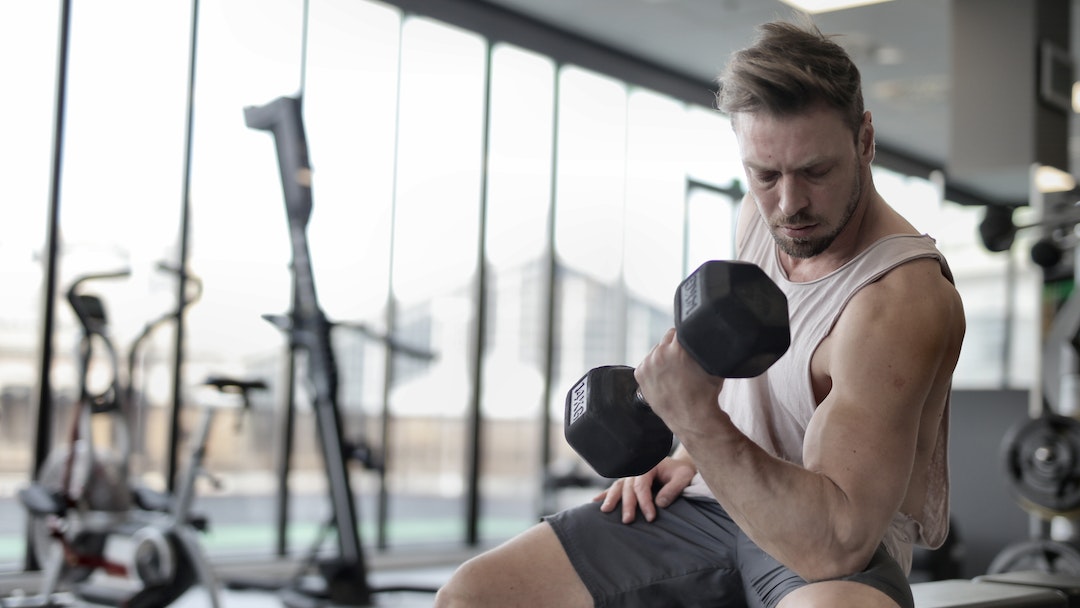Game, set, match. Ouch! Tennis Elbow!
Tennis elbow or (lateral epicondylitis) is a sometimes painful condition that occurs when repetitive movements of the wrists and arms cause tendons to be overworked. You might even feel the pain in and around the areas outside of the elbow. Like when you play tennis, that repetitive motion of the arm and overuse of wrist muscles can cause injury. It also affects tennis players who tend to grip their racquets tightly, but anyone can develop this condition or sustain an elbow injury.
What is Tennis Elbow (Lateral Epicondylitis)?
Tennis Elbow is an overuse injury. When tendons in your arms (tissue that connects bone to muscle) become strained and overworked, they are more likely to become inflamed, degenerate, and even tear.
Did you know? Between 1% to 3% of people in the U.S. alone are inflicted by tennis elbow at some point, especially people over 30. Anyone who regularly performs repetitive actions or activities that use the forearm can get this condition.
What causes tennis elbow?
Typically, the tennis elbow affects the side of your body that you work more. Depending on the type of activities you are doing, the condition can affect your dominant side or, in some cases, both sides.
Overuse
Repetitive movements cause muscle fatigue. As your body tires, the tendons start to feel all the pressure. The overload can cause pain and inflammation, also known as tendinitis. This tendinitis can then cause pain and discomfort to increase over a period of weeks and even longer. Untreated tendonitis leads to further degenerative conditions that could even cause future tearing in the muscles.
Rarely will a patient ever come in with tennis elbow symptoms without a specific reason? Sometimes it’s because you are working 40+ hours slicing meats and cheese at the deli counter or playing three matches of back-to-back tennis. You can easily sustain this arm, hand, and wrist injury. This type of overuse usually happens over a longer period of time and without the proper amount of rest between sessions. The ligaments will continue to fatigue and degrade as you age.
Activities
Repetitive Movement sometimes comes with the territory. So many jobs and careers nowadays are explicitly based on a repetitive workday. Butchers, factory workers, and construction workers, to name a few. The condition is named after a racquet sport because sports like tennis, boxing, weight lifting, golfing, and bowling are synonymous with this arm injury.
Any activity where extra stress is put on the tendons and muscles could be the culprit to your elbow pain. On occasion, some have suffered from tennis elbow by simply knocking their elbow on something. After you bump your arm, any tiny tear can develop near the bony hump (lateral epicondyle), which is located on the outside of the elbow.
Whether it’s the tools, you use in the garden every week or the devices you use daily at work. Working the forearm out can become a strenuous activity.
Related: Can’t Straighten Your Arm After a Workout? Here’s What to Do.
Age
The good old phrase of showing signs of “wear and tear.” As you age, especially when you hit 30 and up, the body wears down naturally. Let’s say you’ve spent 38 years in an occupation that repetitively utilized your arm. It is only logical that the tissues themselves wear down with you as you get older. Although this condition worsens over time, anyone of any age can still suffer from tennis elbow or sustain an elbow injury.

Tell me the symptoms of tennis elbow?
Imagine. Your occupation is a typist, you work almost every day, and you actually transcribed over three towering piles of paperwork today. You start to feel these symptoms:
- Pain in the forearm
- Pain when you move
- Arm fatigue
- Swelling and inflammation
- Arm pain that comes and goes throughout the day
- Tenderness in the area
- Elbow pain when holding things
- Sore forearm muscles and wrists
- Various types of pain (such as sharp pain, burning, throbbing or stinging)
- Resistant pain (not easily remedied by O.T.C. meds)
- Numbness or weakness in arms and hands
If you have one or all of these symptoms you might be suffering from tennis elbow, it’s best to call your health professional and make an appointment. Rest and treat the issues at hand. There are medicines, ointments, exercises, and other treatment plans to help heal a tennis elbow. After talking to a professional, find the perfect cure for you, and you’ll be back at work and play in no time.
How is tennis elbow diagnosed?
Once a healthcare provider has been notified, they can easily diagnose tennis elbow by simply questioning you and performing a quick physical exam. In some rare cases, they may order tests to look further into the problem. These tests might include X-rays, M.R.I.s (magnetic resonance imaging), and E.M.G.S. (electromyography). All these tests just attempt to pinpoint the cause of the symptoms and how to treat them best.
How is tennis elbow treated?
Treatment of tennis elbow usually includes rest, pain relievers, and physical therapy. Specifically, you can use:
- Supportive self-healing care (healing time)
- Self-care or R.I.C.E. (Rest, Ice, Compression, and Elevation)
- Therapy (physical, stretching, massage)
- Medications (such as N.S.A.I.D.S. to reduce inflammation)
- Devices (like a splint and tens unit)
- Herbal remedies (CBD, hemp products, Epsom salts, acupuncture. etc.)
- Ointments and Menthol
- Numbing and analgesics
- Take time off activity and work that might be causing the symptoms
- Surgery to remove the damaged tendons (in very rare instances)
Related: 5 Best CBD Muscle Rubs
Topical treatments are quite effective when it comes to treating tennis elbow. Herbal Ice has an easy roll-on hemp muscle rub. Shop today for quick relief.

Tell me the best way to prevent tennis elbow?
There are several ways you can avoid tennis elbow or prevent most forms of bodily injury in the first place. You can do this by:
Avoiding Repetitive Tasks
Modify your lifestyle as much as possible, briefly discontinue the activities that have caused the elbow injury. If you have to move or work, change your technique when performing those activities. If you feel pain, slow down, or stop altogether. If you are into a sport or activity that involves high-impact arm movements, such as boxing, consider adding a cross-training regimen to offset the repetitive motion.
Taking Breaks and Rest Time
Tennis elbow or not, if your arm is sore, take that as an alert from your body to take a little break. Take small 20 minute breaks throughout the day and allow for proper rest time, especially if you feel pain or see swelling. Apply ice or ointments as you break to increase healing time.
Exercising
At Least three times a week, perform simple wrist flexing exercises. Building up strong muscles can prevent tennis elbow and many other debilitating conditions. Regular exercise teaches the body to bear stress. Activities such as push-ups and weight lifting will increase your arm strength. However, your forearm will need to take a break after a short time. This is when your biceps and back take some of the heat.
Here is a list of top ten exercises to perform when suffering from tennis elbow:
- Bicep Curls
- Wrist Flexing
- Wrist Extending
- Grip Exercises
- Wrist Curls
- Finger Stretches
- Elbow Curls
- Forearm Twists
- Forearm Pull
- Handshake Stretch
Stretching
Do a proper warm-up before you move about or work, follow up with cool-down exercises and stretching. Get the blood pumping and flowing through your system. Muscles become more elastic, and you can improve your range of motion. Proper flexibility prevents added risk of injury.
Expand and stretch out your fingers for five minutes sessions. Hold your arms straight out and hold for 5 seconds. Release your arms and allow them to rest. Sadly while exercising and stretching, you may feel some discomfort. Pushing too far is no good for therapy. Go slow and remember to apply products or take over-the-counter medication to help you move more freely.
Equipment Check
Maybe your tennis racket is too heavy on your wrist. Perhaps you have been gripping your hammer too tightly at the job site. Consider checking and evaluating your equipment, both recreational and career-related.
Purchasing a lightweight tennis racket might relieve some of that pressure. Get new work gloves that cushion your hands so you don’t overwork them. There are also products like tennis elbow support straps that can be beneficial. This type of brace is worn periodically to help lessen muscle stress.
Evaluating Pain Levels
Pain scales often run from 1-10, with one being you feel slightly sore and ten being the highest level of pain. If you start to believe your pain levels have reached five or above, it is probably a sign to rest up immediately. However, some athletes can’t just stop playing their sport. And jobs are a necessity because bills must be paid on time. Using the pain scale as a guide and then pausing temporarily can help avoid a more extended downtime in the long run.
Techniques
Many times it is just not an option to stop moving altogether. So instead, we can focus more on how we move. Playing a sport, consider hiring a professional coach to teach you form. Good movement techniques will allow you to play longer without muscles and tendons becoming sore.
If you are on a computer all day, maybe talk to your boss and see if you can switch it up for a week or get someone to help you with repetitive projects. Computer elbow is very similar to a tennis elbow. Although computer work isn’t as strenuous or fast-paced as a sport, that repetitive action can cause injury to the wrists and forearms.
Today being on your phone, laptop, or smart device is just part of your daily schedule. Over nine million people suffer from tennis elbow every year, and only five percent of those cases are actually caused by playing tennis.

FAQ
Can tennis elbow heal on its own?
Yes, tennis elbow can self-heal. In fact, most people will most likely just progressively get better. Tennis elbow will naturally heal itself over a brief time even though tennis elbow is known to be a self-limiting condition. Speeding the healing process by rest and therapeutic treatments is recommended.
How long does it take tennis elbow to recover?
Tennis elbow symptoms can last between 6 months to several years. Depending on treatments and the patient’s plan of action, most people recover within one year’s time. Once rest on the injured area starts, the pain and inflammation should also begin to subside. Be patient and stick to your treatment plan. You might feel better before the tendon completely heals and accidentally risk re-injury.
What is the fastest way to cure tennis elbow?
Roughly 95 percent of tennis elbow patients recover with non-surgical treatments. However, sometimes the symptoms just seem to linger. There are many different ways to help heal tennis elbow faster.
You also might want to check different ointments, rubs, and natural products available online. Check out Herbal Ice today!
Hemp products are being praised for their anti-inflammatory and analgesic properties without relying on addictive medicines and pain killers. Talk to your doctor about injections and other procedures that might speed up healing time. Your doctor will probably tell you to:
- Rest: Avoid all activities that aggravate the problem
- Relieve: Take OTC meds or natural pain relievers
- Ice: Apply ice or cold pack off and on for 15-minute intervals, up to 4 times a day
- Perfect Technique: Make sure you are using proper movement techniques and avoid repetitive movements.
Related: How to Recover Fast After Leg Day
Conclusion
The best way to heal from a repetitive stress injury, like tennis elbow, is to rest the muscles. Also, find pain relief that fits your lifestyle and purpose and works for you. Talk to your healthcare providers and see if surgery or other necessary treatments.
Arm yourself with natural remedies to pain, such as hemp or CBD, that have become increasingly popular in the market. Hemp products are known to help tennis elbow because of their ability to heal naturally. Plus, these products are packed with organic pain relief and exceptional anti-inflammatory properties.
Grab some Herbal Ice Herbal Muscle Rub today for fast relief.



